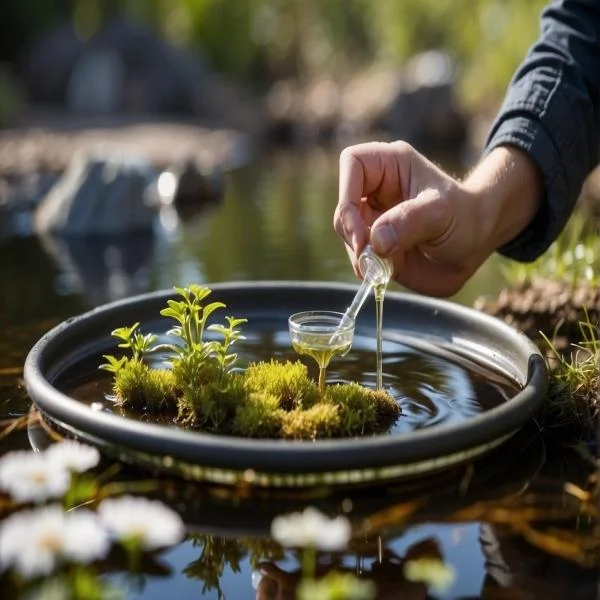
Ammonia, a naturally occurring compound of nitrogen and hydrogen, can be found in various water sources, often due to agricultural runoff, industrial waste, or organic decomposition. While low ammonia levels are typically harmless, elevated concentrations can pose serious health risks to humans, animals, and aquatic life. This article explores how to detect ammonia in water sources, why it's crucial to manage its presence and effective removal methods.
Understanding Ammonia in Water
Ammonia can enter water sources in several ways, including:
- Agricultural Runoff: Fertilizers contain nitrogen-based compounds that can convert to ammonia and leach into groundwater and streams.
- Industrial Effluents: Certain industries release ammonia-containing wastewater.
- Waste Decomposition: Organic waste decomposing in water can release ammonia as a byproduct.
In small amounts, ammonia may not pose a serious threat. However, when levels rise, it can harm the environment and public health, making detection and removal essential.
Why Ammonia in Water Is a Concern
High levels of ammonia in water can create various issues:
- Human Health Risks: Consuming water with elevated ammonia levels can lead to symptoms such as nausea and headaches. Long-term exposure can have more serious health effects.
- Aquatic Ecosystems: Ammonia is toxic to fish and other aquatic life, affecting biodiversity and water quality.
- Soil and Plant Health: Ammonia-rich water can alter soil pH and affect plant health when used for irrigation.
Because of these risks, the U.S. Environmental Protection Agency (EPA) and other organizations have set limits on acceptable ammonia levels in drinking water.
Detecting Ammonia in Water
Several methods can help identify ammonia in water sources:
- Ammonia Test Kits: Simple kits, available at most hardware stores, use chemical reactions to indicate ammonia concentration levels. They’re popular for quick on-site testing.
- Electronic Ammonia Meters: More precise than test kits, these meters are commonly used in labs and offer accurate measurements for water analysis.
- Colorimetric Analysis: This method uses color-changing reagents to determine ammonia levels. The darker the color, the higher the ammonia concentration.
- Laboratory Analysis: For highly accurate results, samples can be sent to a lab for testing. Lab tests can detect ammonia at very low levels, which is especially useful in sensitive areas like drinking water supplies.
Routine testing is essential, especially for areas where ammonia contamination is suspected, such as near farms, factories, or waste treatment plants.
Methods to Remove Ammonia from Water
If ammonia is detected at concerning levels, several methods can effectively reduce or eliminate it:
1. Biological Filtration (Biofiltration)
Biological filtration uses bacteria that naturally break down ammonia into less harmful substances. This process is often used in water treatment facilities and large aquariums.
- Nitrifying Bacteria: Specific bacteria convert ammonia into nitrites, which are then further broken down into nitrates.
- Biofilters: These systems provide an ideal environment for nitrifying bacteria, making them effective for long-term ammonia control in water systems.
2. Ion Exchange
This method involves exchanging ammonia ions with other ions (such as sodium or potassium) on a special resin bed. Ion exchange is effective for both home systems and municipal water treatment.
- Resin Beads: The resin beads in ion exchange systems attract ammonia, removing it from the water.
- Regeneration Process: Over time, the resin needs to be regenerated with a salt solution to restore its ammonia-absorbing capacity.
3. Reverse Osmosis (RO)
Reverse osmosis is a physical filtration process where water is pushed through a semipermeable membrane, which traps ammonia and other contaminants.
- Effective for Drinking Water: RO systems are commonly installed for household use, making it a practical option for homes with ammonia-contaminated water sources.
- Maintenance: RO membranes require regular cleaning and replacement to function effectively.
4. Activated Carbon Filtration
Activated carbon filters are effective at removing organic compounds and some ammonia.
- Absorption: Activated carbon absorbs ammonia, reducing its concentration in the water.
- Replacement: Carbon filters need to be replaced periodically to maintain effectiveness, especially in areas with high ammonia levels.
5. Chemical Treatment
Chemical treatments such as chlorination can neutralize ammonia, converting it to less harmful substances.
- Chlorine: Chlorine reacts with ammonia to form chloramines, which can then be filtered out. However, chloramines have their risks, so this method should be used carefully.
- Safety Considerations: Overuse of chemical treatments can lead to byproducts that are harmful if ingested.
Preventing Ammonia Contamination in Water Sources
Proactive measures can reduce ammonia contamination:
- Reduce Fertilizer Runoff: Using controlled-release fertilizers or organic alternatives can help limit ammonia runoff into local water bodies.
- Waste Management: Proper waste disposal from industrial processes and wastewater treatment can prevent ammonia from entering groundwater.
- Buffer Zones: Establishing buffer zones near water sources can reduce contamination from agricultural and industrial activities.
Health Guidelines and Regulations for Ammonia in Drinking Water
Different organizations set specific ammonia limits:
- EPA Standards: The EPA provides guidelines for acceptable ammonia levels in drinking water.
- World Health Organization (WHO): WHO recommends keeping ammonia levels low to avoid risks associated with contamination.
- Local Regulations: Local water authorities may enforce stricter ammonia regulations depending on environmental needs and water quality concerns.
Monitoring and adhering to these guidelines helps ensure water quality and safety.
Home Solutions for Treating Ammonia in Water
For homeowners concerned about ammonia, several small-scale solutions can be implemented:
- Install a Reverse Osmosis System: These systems are effective for removing ammonia and other impurities from drinking water.
- Use Point-of-Entry (POE) Filters: POE filters treat water before it enters the home, reducing ammonia for all household uses.
- Routine Testing: Regularly testing home water sources helps detect ammonia early and ensures timely action.
Importance of Professional Water Treatment for High Ammonia Levels
In cases where ammonia levels are significantly high, professional treatment is recommended. Water treatment companies can assess ammonia levels and recommend tailored solutions, from ion exchange systems to advanced biofiltration. Consulting with professionals also ensures compliance with health standards and optimizes water quality in the long term.
Conclusion
Detecting and managing ammonia in water sources is essential for health and environmental sustainability. With proper testing, prevention strategies, and removal methods, it’s possible to maintain clean and safe water. Whether you’re addressing a small-scale issue at home or working with municipal water systems, understanding ammonia and its management techniques contributes to healthier living and cleaner ecosystems.
Related Articles
Tips for Reducing Ammonia in Pond to Keep Aquatic Life Healthy
Maintaining a healthy pond is crucial for the well-being of fish and other aquatic life, and one of ...
How Do Algae and Fungi Differ From Each Other?
Algae and fungi are fascinating organisms that play crucial roles in our ecosystem, yet they possess ...
What is Fungi? Exploring the Decomposers in Nature
Fungi represent a fascinating kingdom of organisms that includes approximately 144,000 known ...
Ammonia in Pool Water: Common Causes and Effective Solutions
Ammonia in pool water can be a surprising challenge for pool owners, leading to various water ...
What High Levels of Ammonia in the Blood Mean for Health
Ammonia is a naturally occurring substance in the body that is vital to certain metabolic processes. ...
Cyanobacteria vs Algae: Understanding Their Key Differences and Significance
Aquatic ecosystems harbor diverse photosynthetic organisms, with cyanobacteria and algae being two ...






